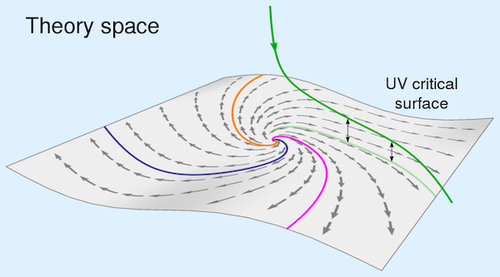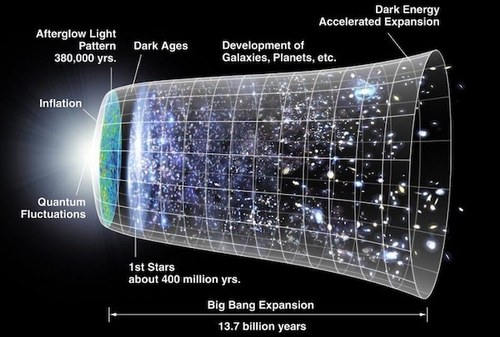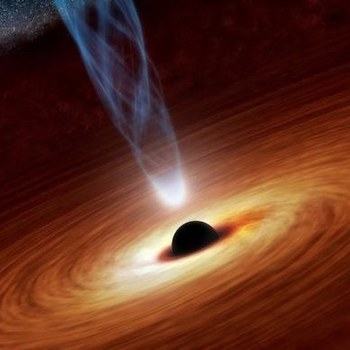Gravitation and Cosmology
In absence of experimental verification of a unified theory of the fundamental interactions, systems characterised by astrophysical and cosmological scales can be studied starting from the semi-classical approach, in which gravity is described by General Relativity while the matter source is described by quantum field theories. This method allows us to study both black hole physics and cosmological models, and constitutes a reference framework for building both classical effective field theories and fully quantum theories of gravitation, such as string theory, non-perturbative quantum field theoretical formulations as well as corpuscular models.

Research activities
Quantum field theories of gravity
This line of research aims at investigating the fundamental gravitational interaction at length and energy scales where quantum effects cannot be neglected. Various approaches are followed, such as: i) Low-energy effective field theories [R.Casadio, A.Kamenchtchik, A.Tronconi, G.P.Vacca], ii) Ultra-violet completion, renormalization group flow and Asymptotic Safety [G.P.Vacca], iii) Modified gravity theories, non-linear Newtonian and corpuscular models [R.Casadio, A.Kamenchtchik; I.Kuntz, M.Lenzi]; iv) Quantum field theories on curved backgrounds and analogue solid state models [R.Balbinot]; v) Quantum gravity aspects related with a minimum measurable length and the statistical interpretation of the gravitational field equations [A.Pesci].

Theoretical cosmology
The entire Universe evolution is studied, from the early instants of time after the Big Bang to the present accelerating era: i) models of inflationary cosmology and cosmic microwave background radiation [R.Casadio, A.Kamenchtchik, A.Tronconi, G.P.Vacca]; ii) Models of dark energy, modified gravity theories and dark matter [R.Casadio, A.Kamenchtchik; I.Kuntz, M.Lenzi]; iii) Quantum cosmology and the fate of cosmological singularities [R.Casadio, A.Kamenchtchik, A.Tronconi; I.Kuntz]; iv) String cosmology with applications to cosmological inflation, reheating, dark matter, dark radiation and dark energy [M.Cicoli, F.Pedro, V.Guidetti, I.Broeckel]; v) Primordial black hole production [A.Kamenchtchik, A.Tronconi, M.Cicoli, F.Pedro].

Physics of black holes and compact astrophysical objects
Gravitational interactions are investigated for physical systems in extreme configurations like black holes and other compact astrophysical objects: i) Analogue models for the Hawking radiation [R.Balbinot]; ii) Horizon formation and onset of Hawking radiation in the gravitational collapse of compact objects, the possible removal of classical singularities and regular black holes [R.Casadio, A.Kamenchtchik, A.Tronconi; I.Kuntz, M.Lenzi]; iii) Minimal Geometric Deformation for exotic compact astrophysical objects and compact sources in post-Newtonian quantum gravity [R.Casadio, I.Kuntz].
National and international projects and collaborations
Our research activities are also supported by the INFN initiatives: FLAG [R.Casadio, A.Kamenchtchik, A. Pesci, A.Tronconi, G.P.Vacca], ST&FI [M.Cicoli, F.Pedro] QUAGRAP [R.Balbinot].
At the international level, we mention University of Sussex, UK (X. Calmet), University of Opava, CZ (J. Ovalle, Z. Stuchlik), ABC Federal, BR (R. DaRocha), LMU, D (G. Dvali), ISS, RO (Micu), Bishop U., CA (V. Faraoni), Landau Institute, Moscow (A. Starobinsky), Lebedev Institute, Moscow (A. Barvinsky), JINR, Dubna (O. Teryaev), University of Lomonosov (S. Vernov), University of Colonia (C. Kiefer).